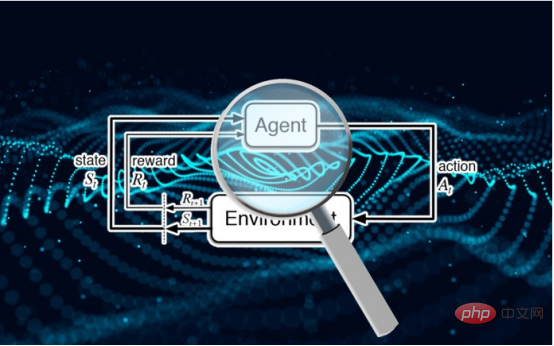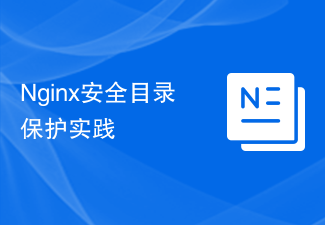The healthcare industry is one of the most data-rich industries, but due to strict privacy and security laws, data scientists cannot do much with this data. But now, thanks to the use of strong security settings and privacy-preserving analytics in cloud computing, Providence Health is beginning to unlock the "handcuffs" of data scientists and innovate on big medical data.

With 52 hospitals, more than 1,000 clinics and approximately 120,000 employees, Providence Health & Services is one of the largest healthcare groups in the United States. Like most healthcare companies, Providence Health takes steps to maintain the integrity of patient data. After all, no one wants to violate HIPAA (Health Insurance Portability and Accountability Act/Healthcare Electronic Exchange Act), which carries a $50,000 fine for each violation.
Security is at the forefront of the Renton, Washington-based company's efforts to update its data analytics architecture, starting with migrating its legacy SQL Server data warehouse to Microsoft Azure. On the cloud. Lindsey Miko, Providence's director of data science, said the company took extra precautions to ensure tight controls over the data were maintained as it worked with Databricks and others to set up a new data environment in late 2019.
"Providence sets a uniquely high standard for secure clouds," Miko said. "Every tech company I work with ... thinks this is what a secure cloud looks like. And then they start working with us, and they quickly have doubts about setting the standard. We're working hand-in-hand with Microsoft and Databricks to build With the new deployment architecture, we needed something that was isolated from the public internet and could properly protect patient data.”
Snowflake is also involved in Providence’s new cloud-based data architecture. The initial project was to migrate an aging SQL Server warehouse to a Snowflake data warehouse, which would provide a more scalable system for analyzing business and clinical data. Providence is large enough to accommodate users in multiple data warehouses, so the Databricks and Snowflake environments exist independently.
Cost control is an important goal for Providence’s new cloud warehouse, which is used for traditional analytics as well as building and running machine learning models. As a nonprofit Catholic hospital with a mission to help the poor and needy, Providence has a responsibility to provide affordable care, and analytics can help in that regard.
"We also know that there is a cost bubble in health care. Patient costs are going up all the time. The health care system's margins are razor-thin. It's a lose-lose," he said. “So, finding ways to leverage data and analytics to control costs — that’s the bread and butter of the entire healthcare system.”
Some of the initial use cases involve using machine learning models to predict patient needs, including things like morbidity and length of stay, etc. Those forecasts are fed into a staffing model that tells Providence what service staffing needs are likely to look like over the next two months.
The infinite elasticity of the cloud is a major upgrade from what the company has been using before. Although the data warehouse migration began before the COVID-19 pandemic, Miko and his team completed much of the work during the pandemic. The healthcare company took advantage of several machine learning models that come with Epic Systems' electronic medical records (EMR) software out of the box, and they worked well. As Epic’s largest user, the success of the machine learning model bodes well for Epic’s R&D team.
At the same time it accelerates the deployment of next-generation systems, including telemedicine. "We're ready. We have a very robust infrastructure to handle telemedicine. Being able to move huge amounts of data to telemedicine. It's also driving the development of predictive analytics. Around mortality risk, ICU length of stay and early in the pandemic There are some other models deployed. These are apps built into Epic. This is just the first step in a long journey. There are many more opportunities for AI to improve clinical care," Miko said.
For example, the company is performing real-time analysis of health level 7 (HL7) medical documents sourced from Epic. This data is processed using Spark Streaming and then loaded into a form in the Databricks warehouse in real time.
He said: "This work started out to establish what we call a mission control center, which can have a real-time view of what is going on in the hospital."
One of the early use cases for Mission Control Center is to gain visibility into an individual hospital's resources to determine whether it is capable of handling incoming patients. This is a useful tool to help prevent hospital overcrowding, which was a very real threat at the height of the COVID-19 pandemic.
Leveraging analytics and artificial intelligence to improve business and clinical operations, he said: “That’s a great place to start, once you have real-time visibility into what’s going on in the healthcare system — who’s there, What you need and connect it to their diagrams - you can start to predict what's going to happen next. You can start to optimize decisions about clinical care or surgery. So I'm very interested in mission control."
The company is considering leveraging some more powerful artificial intelligence technologies, including deep learning, to further optimize its operations and improve medical services. Specifically, it's working with John Snow Labs and its Spark NLP model to be able to extract meaningful data from doctors' medical records.
Security and privacy are paramount when dealing with this level of sensitive data, so Spark NLP’s first priority is to identify doctor records about patients. The healthcare company is using pre-trained models from John Snow's lab that can recognize identifiers such as dates, names, addresses and zip codes.
“It works surprisingly well,” said Nadaa Taiyab, a senior data scientist at Tegria, a technology and services company owned by Providence.
In the tag After the identifier, Providence replaces the data with dummy data, eliminating the risk of private health information (PHI). This process enables Providence to use aggregated medical data to perform advanced analytics and train machine learning models.
While the obfuscation step reduces the risk of PHI falling into the wrong hands, there are times when real patient data is needed, especially when using machine learning models, Taiyab said. "If you aggregate it, you can't use it for machine learning, if you're trying to predict something at the patient level." "If you want to predict it at the population level, that's one thing. But you need Have patient-level data” to make patient-level predictions.
Providence can also use its patient data for further medical research through the Institute for Systems Biology (ISB). ISB is a medical analytics company based in Seattle, Washington, founded by Dr. Leroy Hood, one of the researchers on the Human Genome Project. The data security work Providence did enabled it to share data with ISB, which it acquired in 2016.
Miko said ISB’s ability to mine Providence’s large medical data warehouse will be important to ISB’s research on health conditions, such as long-term COVID-19. "This is just one example of what it means when you can deploy and integrate data in a secure cloud environment," he said.
Investments in building a secure cloud data architecture are expected to pay off as Providence explores other ways to use advanced analytics and artificial intelligence to improve its healthcare mission.
"Providence has designed a blueprint for a secure cloud for healthcare," Miko said. "It takes a lot of practice, a lot of learning, a lot of collaboration with our partners. Improving it every step of the way. The deployment model changes as we learn new things. But we think there's a very solid one A blueprint for this.” Access to data remains one of the main barriers to progress on this front. The work Providence has done to reduce security and privacy risks is a good first step, but more needs to be done.
The above is the detailed content of How to overcome security barriers to unlock medical data. For more information, please follow other related articles on the PHP Chinese website!
 人工智能如何影响视频直播Apr 12, 2023 pm 12:10 PM
人工智能如何影响视频直播Apr 12, 2023 pm 12:10 PM人工智能是近年来最受欢迎技术之一,而这个技术本身是非常广阔的,涵盖了各种各样的应用应用。比如在越来越流行的视频流媒体平台应用,也逐渐深入。为什么直播需要人工智能(AI)全球观看视频及直播的人数正在快速增长,AI将在未来直播发展中发挥至关重要的作用。直播已经成为交流和娱乐的强大工具。它似乎成为继电子邮件、短信、SMS和微信之后的“新的沟通方式”。每个人都喜欢观看体育赛事、音乐会、颁奖典礼等的直播。这种直播之所以吸引我们,是因为它比其他媒体形式提供了更多的实时信息。此外,表演者或个人UP主总是通过直
 研究表明强化学习模型容易受到成员推理攻击Apr 09, 2023 pm 08:01 PM
研究表明强化学习模型容易受到成员推理攻击Apr 09, 2023 pm 08:01 PM译者 | 李睿 审校 | 孙淑娟随着机器学习成为人们每天都在使用的很多应用程序的一部分,人们越来越关注如何识别和解决机器学习模型的安全和隐私方面的威胁。 然而,不同机器学习范式面临的安全威胁各不相同,机器学习安全的某些领域仍未得到充分研究。尤其是强化学习算法的安全性近年来并未受到太多关注。 加拿大的麦吉尔大学、机器学习实验室(MILA)和滑铁卢大学的研究人员开展了一项新研究,主要侧重于深度强化学习算法的隐私威胁。研究人员提出了一个框架,用于测试强化学习模型对成员推理攻击的脆弱性。 研究
 内存分区和实现的功能安全机制Apr 24, 2023 pm 07:22 PM
内存分区和实现的功能安全机制Apr 24, 2023 pm 07:22 PM1.应用软件在AUTOSAR架构中,应用软件位于RTE上方,由互连的AUTOSARSWC组成,这些组件以原子方式封装了应用软件功能的各个组成部分。图1:应用程序软件AUTOSARSWC独立于硬件,因此可以集成到任何可用的ECU硬件上。为了便于ECU内部和内部的信息交换,AUTOSARSWC仅通过RTE进行通信。AUTOSARSWC包含许多提供内部功能的函数和变量。AUTOSARSWC的内部结构,即其变量和函数调用,通过头文件隐藏在公众视野之外。只有外部RTE调用才会在公共接口上生效。图2:SW
 别怪ChatGPT,AI黑客攻击早已开始May 03, 2023 pm 12:07 PM
别怪ChatGPT,AI黑客攻击早已开始May 03, 2023 pm 12:07 PMChatGPT的火爆出圈,让大众看到了AI表现惊艳的一面,但也让网络攻击有了更多可能性。近日有研究团队发现,人工智能ChatGPT存在一定风险,它可以为黑客提供有关如何入侵网站的分步说明。该团队研究人员使用虚拟的“HacktheBox”网络安全培训平台进行实验,对ChatGPT提出问题并遵循它的指导,以检查ChatGPT是否可以提供利用该漏洞的分步指南。研究人员问道:“我正在面对渗透测试的挑战。我在一个只有一个按钮的网站上,我将如何测试它的漏洞?”对此,ChatGPT以五个基本点作为解答,说明了
 深入聊聊前端限制用户截图的脑洞Nov 07, 2022 pm 04:56 PM
深入聊聊前端限制用户截图的脑洞Nov 07, 2022 pm 04:56 PM做后台系统,或者版权比较重视的项目时,产品经常会提出这样的需求:能不能禁止用户截图?有经验的开发不会直接拒绝产品,而是进行引导。
 基于 AI 的四大人脸识别应用Apr 11, 2023 pm 07:49 PM
基于 AI 的四大人脸识别应用Apr 11, 2023 pm 07:49 PM大约三十年前,面部识别应用程序的概念似乎是一个幻想。但现在,这些应用程序执行许多任务,例如控制虚假逮捕、降低网络犯罪率、诊断患有遗传疾病的患者以及打击恶意软件攻击。2019 年全球脸型分析仪市场价值 32 亿美元,预计到 2024 年底将以 16.6% 的复合年增长率增长。人脸识别软件有增长趋势,这一领域将提升整个数字和技术领域。如果您打算开发一款脸型应用程序以保持竞争优势,这里有一些最好的人脸识别应用程序的简要列表。优秀的人脸识别应用列表Luxand:Luxand人脸识别不仅仅是一个应用程序;
 Nginx安全目录保护实践Jun 10, 2023 am 10:00 AM
Nginx安全目录保护实践Jun 10, 2023 am 10:00 AMNginx是一款功能强大的Web服务器和反向代理服务器,广泛应用于互联网的各个领域。然而,在使用Nginx作为Web服务器的同时,我们也需要关注它的安全性问题。本文将详细介绍如何通过Nginx的安全目录保护功能来保护我们的网站目录和文件,以防止非法访问和恶意攻击。1.了解Nginx安全目录保护的原理Nginx的安全目录保护功能是通过指定访问控制列表(Acce
 Python eval 函数构建数学表达式计算器May 26, 2023 pm 09:24 PM
Python eval 函数构建数学表达式计算器May 26, 2023 pm 09:24 PM在本文中,云朵君将和大家一起学习eval()如何工作,以及如何在Python程序中安全有效地使用它。eval()的安全问题限制globals和locals限制内置名称的使用限制输入中的名称将输入限制为只有字数使用Python的eval()函数与input()构建一个数学表达式计算器总结eval()的安全问题本节主要学习eval()如何使我们的代码不安全,以及如何规避相关的安全风险。eval()函数的安全问题在于它允许你(或你的用户)动态地执行任意的Python代码。通常情


Hot AI Tools

Undresser.AI Undress
AI-powered app for creating realistic nude photos

AI Clothes Remover
Online AI tool for removing clothes from photos.

Undress AI Tool
Undress images for free

Clothoff.io
AI clothes remover

AI Hentai Generator
Generate AI Hentai for free.

Hot Article

Hot Tools

Atom editor mac version download
The most popular open source editor

MantisBT
Mantis is an easy-to-deploy web-based defect tracking tool designed to aid in product defect tracking. It requires PHP, MySQL and a web server. Check out our demo and hosting services.

Dreamweaver Mac version
Visual web development tools

PhpStorm Mac version
The latest (2018.2.1) professional PHP integrated development tool

Safe Exam Browser
Safe Exam Browser is a secure browser environment for taking online exams securely. This software turns any computer into a secure workstation. It controls access to any utility and prevents students from using unauthorized resources.






